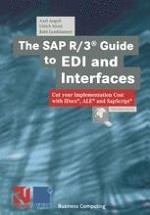2000 | Book
The SAP R/3® Guide to EDI and Interfaces
Cut your Implementation Cost with IDocs®, ALE® and SapScript®
Authors: Axeö Angeli, Ulrich Streit, Robi Gonfalonieri
Publisher: Vieweg+Teubner Verlag
Book Series : Business Computing
Included in: Professional Book Archive
